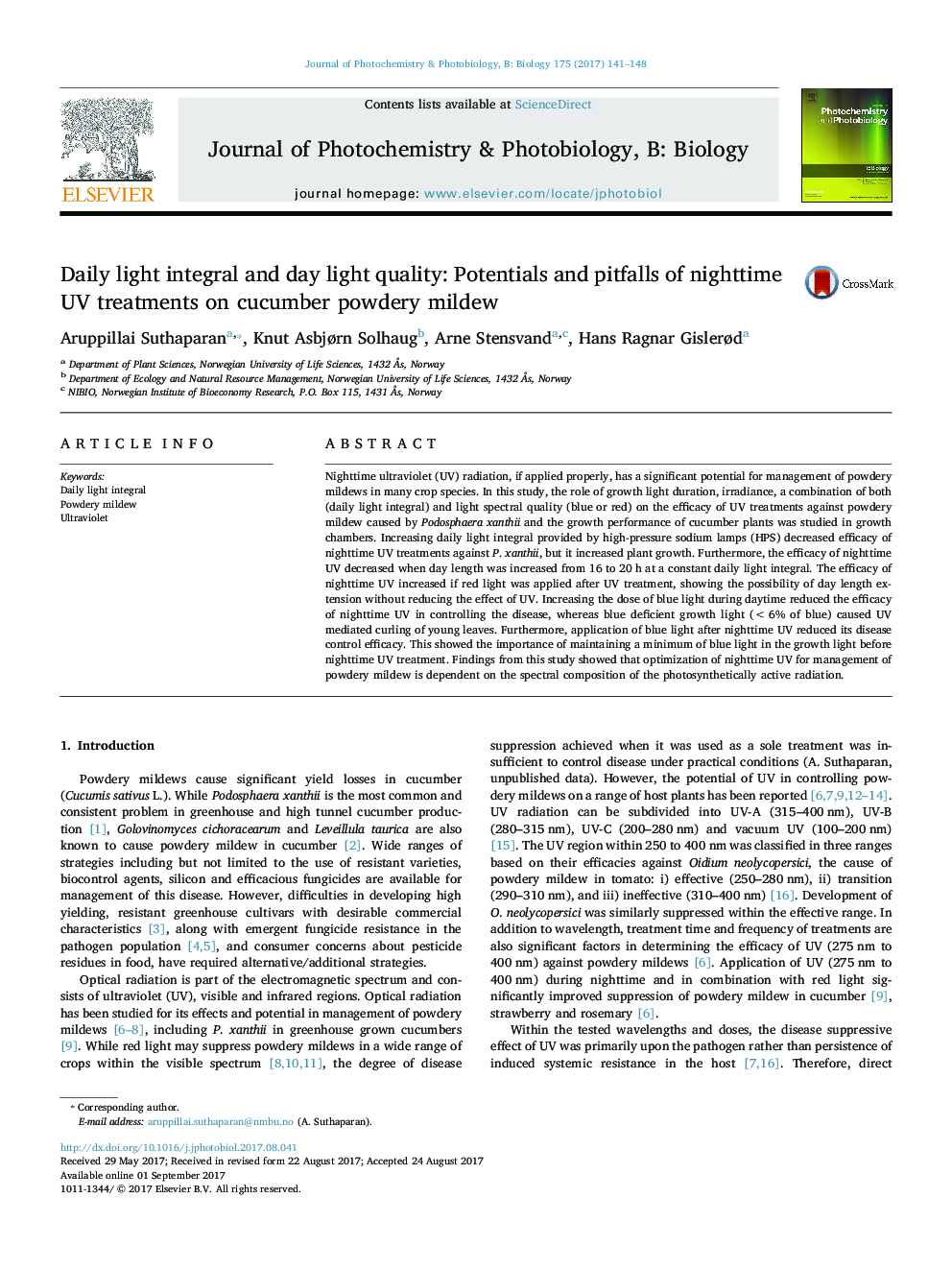| کد مقاله | کد نشریه | سال انتشار | مقاله انگلیسی | نسخه تمام متن |
|---|---|---|---|---|
| 6452524 | 1418058 | 2017 | 8 صفحه PDF | دانلود رایگان |

- Growth light architecture on disease control efficiency of nighttime UV is proposed.
- Nighttime UV efficiency decreased with increased daily light integral, and day length.
- Nighttime UV efficiency increased if red light was applied after UV as day extension light.
- Nighttime UV efficiency decreased with increasing dose of daytime blue light.
- A certain minimum proportion of blue in the growth light used before UV treatment is necessary.
Nighttime ultraviolet (UV) radiation, if applied properly, has a significant potential for management of powdery mildews in many crop species. In this study, the role of growth light duration, irradiance, a combination of both (daily light integral) and light spectral quality (blue or red) on the efficacy of UV treatments against powdery mildew caused by Podosphaera xanthii and the growth performance of cucumber plants was studied in growth chambers. Increasing daily light integral provided by high-pressure sodium lamps (HPS) decreased efficacy of nighttime UV treatments against P. xanthii, but it increased plant growth. Furthermore, the efficacy of nighttime UV decreased when day length was increased from 16 to 20Â h at a constant daily light integral. The efficacy of nighttime UV increased if red light was applied after UV treatment, showing the possibility of day length extension without reducing the effect of UV. Increasing the dose of blue light during daytime reduced the efficacy of nighttime UV in controlling the disease, whereas blue deficient growth light (<Â 6% of blue) caused UV mediated curling of young leaves. Furthermore, application of blue light after nighttime UV reduced its disease control efficacy. This showed the importance of maintaining a minimum of blue light in the growth light before nighttime UV treatment. Findings from this study showed that optimization of nighttime UV for management of powdery mildew is dependent on the spectral composition of the photosynthetically active radiation.
Journal: Journal of Photochemistry and Photobiology B: Biology - Volume 175, October 2017, Pages 141-148